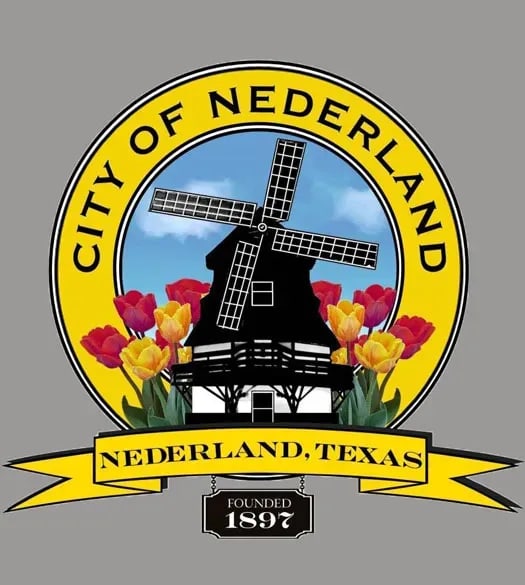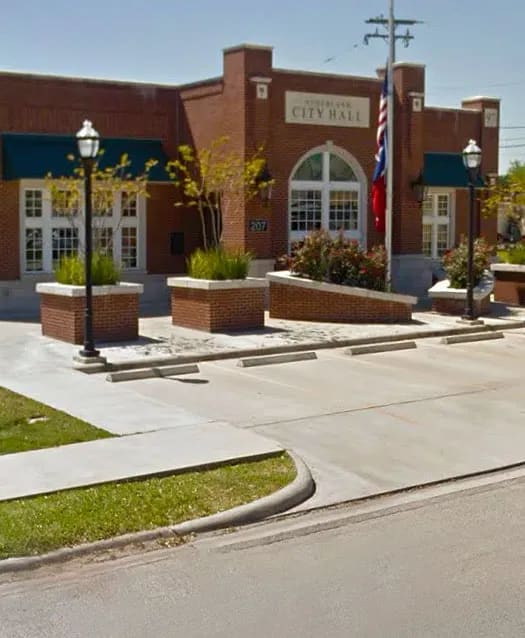Manhole Sealing in Nederland, Texas
Problem
During rainy periods in Nederland, Texas, storm water inflow and infiltration (I&I) was seriously impacting manholes upstream and downstream of a 30-inch sanitary main trunk line. Soil was eroding into the line, and large voids were forming in proximity to the manholes. The situation became critical when the city treatment plant became overloaded with excess water. Facing water treatment cost overruns as well as potential failure of an increasingly compromised sewer system, city officials were looking for answers.
Analysis
A video of the line revealed that the I&I was occurring at the manholes. City officials originally considered a cured-in-place liner for the repair but digging up the line was not feasible due to the complexity of parallel and cross pipelines above and below the sewer main. (The 30-inch sanitary line in question ran parallel to a major city street and flowed beneath a utility easement containing overhead power lines and six underground pipelines. Additionally, three 30-inch storm sewer lines were located directly above and parallel to the sanitary line and flowed to an adjacent canal.) The city needed an efficient, non-invasive, long-lasting, and economical repair method to eliminate this major I&I burden on the municipal sewer system. Most of all, any repair approach would have to take into account the complexity of the arrangement of infrastructure assets above and below the ground.
Solution
Nederland selected URETEK to seal the inlets and outlets of the manholes with its URETEK Deep Injection® (UDI) technique. Because of the extent of soil erosion, three cubic yards of flowable fill material was first added to reduce the void space prior to UDI. URETEK prepared the injection sites by drilling a series of 5/8-inch diameter holes into the soil around the circumference of each manhole. Crew members then injected URETEK 486 Star® polymer into each of the sites at depth, withdrawing vertically in increments to create a continuous blanket of material around the manholes and the inlet/outlet joints.
Result
In less than four hours, URETEK sealed both manholes and effectively eliminated any future I&I risk from storm water. The manholes are now leak-free, and the city benefits from a reduced load to its treatment plant. Not only was URETEK’s solution quick and efficient, Nederland also saved over 75% of the cost of the alternative (cured-in-place liner) repair method. Most importantly, URETEK’s solution was effective without compromising the complicated network of water, wastewater, utility, and surface infrastructure assets located in proximity to the leaking manholes.
URETEK Deep Injection® (UDI)
Widely referenced throughout our industry, UDI involves the injection of structural polymer into base and subgrade soils to increase the load bearing capacity. This is achieved by injecting the polymer through small holes drilled directly through the pavement structure to depths determined by site-specific analysis. Our URETEK 486 Star® material flows easily into voids and weak zones within the soil mass below. Through a controlled chemical reaction, the expanding polymer compacts surrounding soils and applies a controlled pressure on targeted areas of the affected pavement above. If needed, a multi-injection design plan is utilized to gently return the pavement to its original grade. The composite material quickly cures into a strong, dimensionally stable, and water-resistant geo-material, providing years of reliable service.
URETEK 486 Star®
URETEK 486 Star® polymer is a two-component, high-density, expanding thermoset polyurethane system. It was developed to be the ideal solution for under-sealing, void filling, lifting of settled pavement, stabilization and stiffening of weak soils, and for encapsulating and sealing buried infrastructure. URETEK 486 Star® is environmentally inert, non-toxic, and resists underground water erosion or weakening due to its industry-leading hydrophobic properties.


